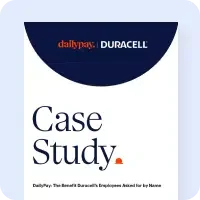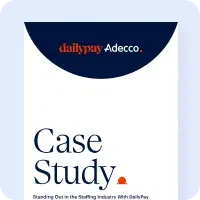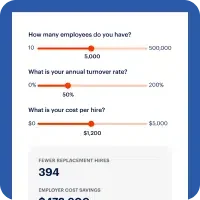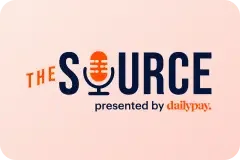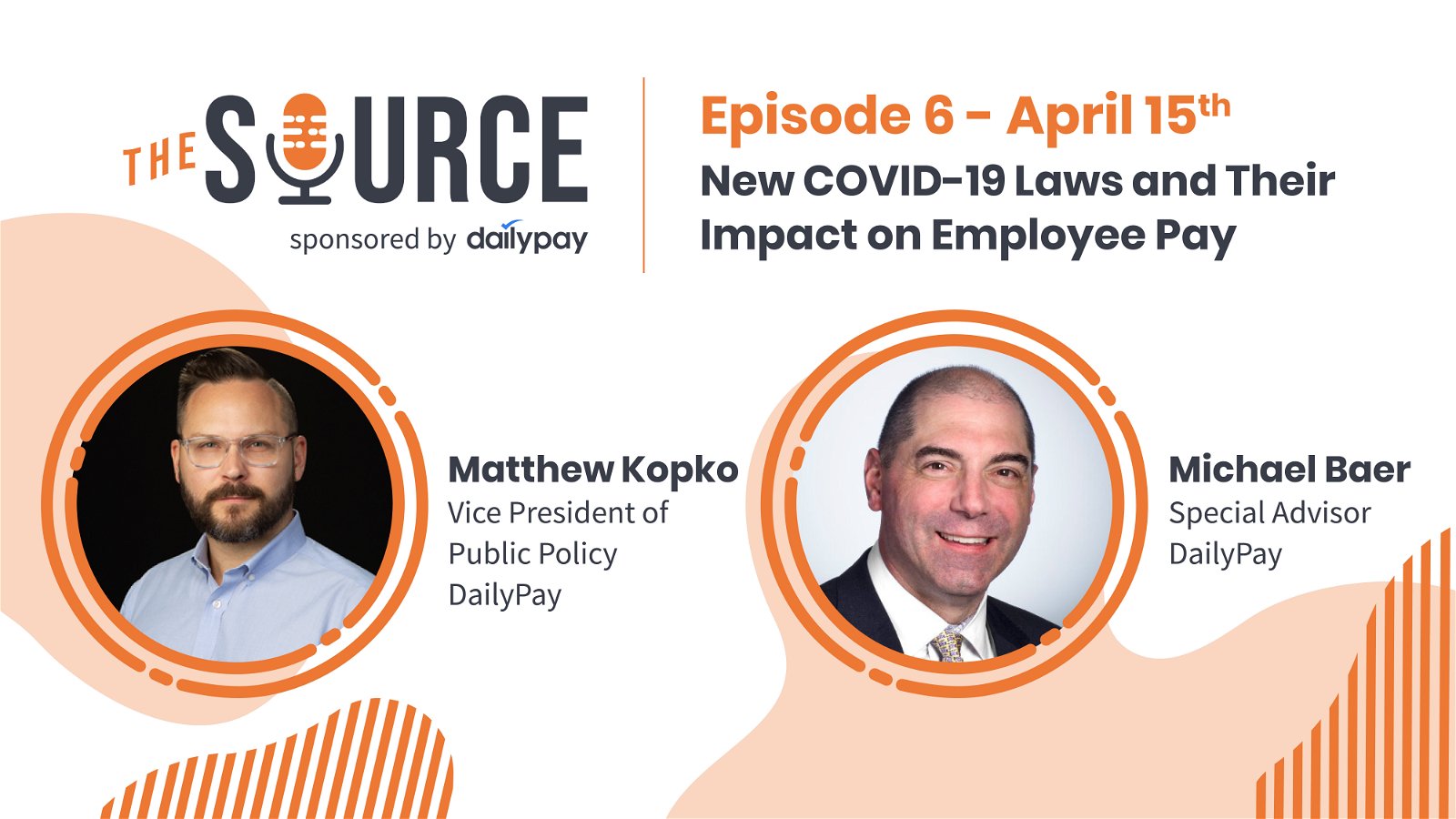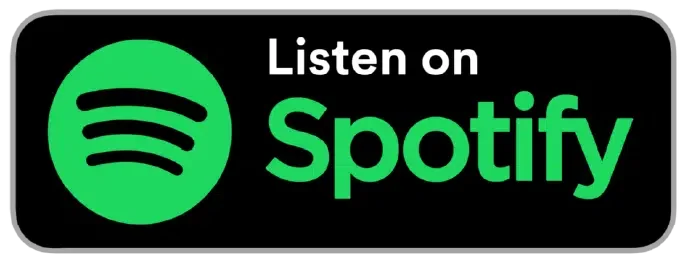Episode Description: Head-spinning new requirements for employers to pay workers during the COVID-19 pandemic are confusing and may overlap. DailyPay’s The Source podcast provides some clarity. Join Michael Baer, CPP, and DailyPay’s Vice President of Public Policy, Matthew Kopko, as they peel back the layers on government attempts to aid affected employers and their workers through required paid time off, loan opportunities and forgiveness so payroll can be maintained.
About Our Speakers

Matt Kopko is DailyPay’s Vice President of Public Policy, where he manages DailyPay’s interactions with regulators, legislators, other government officials and stakeholders. Prior to his role at DailyPay, Matt served in a similar role at Bird, the micromobility company. Matt was also a senior government official and member of the Senior Executive Service, as well as an attorney in private practice. Matt holds a bachelor’s degree from Princeton University, and a JD/MBA from the University of Chicago.
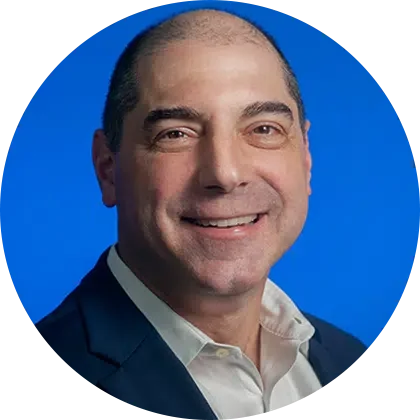
Michael Baer is the host and executive producer of The Source podcast. Michael previously oversaw domestic and international payroll news and analysis at Bloomberg Tax, previously BNA.
In a career spanning three decades, Michael transformed the role of managing editor, becoming an information services leader who managed every aspect of world-class global products and platforms, while continuously increasing revenue and achieving market-best customer satisfaction. He directed a team of editors and writers who were charged with translating complicated tax and labor laws into English so non-lawyers could easily understand and apply them, and was integral in organizing and placing that content on easy-to-access web platforms, resulting in the highest net promoter scores the company had seen for any of their offerings.
Michael has been a frequent public speaker for conferences and webinars, and now is the host of The Source, sponsored by DailyPay. Michael joined the DailyPay team in 2019.
In this podcast you will learn about…
- Several facets of COVID-19 relief efforts involve payments to employees
- Payroll professionals needed to pivot to set up new types of payments
- Special sick pay and leave pay, along with pay to keep out-of-work employees whole, can be available on-demand in some situations.
Thanks for tuning in!
Podcast Transcript:
Speaker 1:
Welcome to The Source, your monthly resource for regulatory updates and issues in the on-demand pay industry. The Source is brought to you by DailyPay the industry leading provider of the daily pay benefit. This material is for general information only and the views expressed herein reflect only the views of DailyPay. This program should be considered marketing material and should not be relied on for legal, tax, accounting or regulatory advice. Now, let’s welcome our host Michael Baer.
Michael Baer:
Hello everyone and welcome to The Source. Under normal circumstances, The Source, which is sponsored by DailyPay, provides insights into active and upcoming legislation impacting the on-demand pay industry, and with special guests, we help clarify issues surrounding on-demand pay. With the coronavirus pandemic changing our lives literally overnight, and we hope all of you are adjusting to these changes so as many of us as possible can stay healthy. A lot has changed in how and what employers are paying their workers during this crisis, and we are going to be solely addressing that today in this episode of The Source.
Michael Baer:
So government stimulus programs include mandates and incentives for paying workers for time off related to the crisis and for keeping them on the payroll. These and other changes such as stopping student loan garnishments from pay are leaving many employers with a lot of implementation questions as employees try to stay as financially stable as possible during this crisis. Today, I have a special guest with me who with a team of analysts at DailyPay has been tracking all of these developments and will help clarify what’s been going on. Matthew Kopko, DailyPay’s vice president of public policy, welcome to The Source. Let me ask this. As employer scramble to react and implement these unprecedented changes, what are some of the most important pieces of these new laws that impact employee payments?
Matthew Kopko:
Well, thanks Mike, and I’m glad to be here. Yes, there certainly has been a flurry of activity at the state and federal levels since the onset of this crisis that’s very relevant to employers. Congress has now passed three different pieces of legislation. Phase one was initial emergency relief for governments to combat the virus. Phase two was a larger package that include paid and emergency leave requirements, which we’ll be discussing later. Among other things, the phase three, $2 trillion bill was passed recently to provide individual assistance to businesses and to support them to weather this unprecedented crisis. This phase three bill is the largest financial relief package in American history. At the same time, states have also been passing legislation affecting employee leave and other topics. New York and other states across the country got quick to work to pass new laws.
Matthew Kopko:
So first let’s cover some important things to know about paid time off, pandemic leave and emergency and medical leave. It will be very important for employers to keep track of paid leave obligations, and if possible, execute them in normal payroll processes to keep friction to a minimum.
Michael Baer:
Okay, Matt. So my understanding is regarding paid leave under the new law, smaller employers are having to pay leave to workers directly impacted by the COVID-19 virus, or certain government responses to it under federal law. I understand there are two types of required leave. There’s an emergency paid sick leave and a new addition to family medical leave, this one paid to allow those with children who have to be home and also who cannot work to qualify. Also, many employers are providing additional paid time off on their own without any requirement to do so. Although understand some incentives are in the latest version of the stimulus plan. But onto the paid sick leave or paid time off, what’s the criteria for the emergency paid sick leave in the FMLA add-on?
Matthew Kopko:
Well, there are numerous scenarios that could trigger coverage. In short, the employee would have to be not able to work and be significantly affected by the coronavirus pandemic, either directly by having it or having a relative with it, or indirectly by say, as you mentioned, having to care for kids at home because daycare options are closed or schools are closed. But the key here is the employee must be unable to work. So that also means that they would have to be unable to work from home as well.
Michael Baer:
That’s right. So teleworkers, that’s not included. They’re not to get the special paid time off. I also understand, so this is only for smaller employers, is that right?
Matthew Kopko:
Well, yes. The Democrats had actually wanted these paid leave provisions to apply to all employers, but as of now, only employers with fewer than 500 employees are subject to the federal emergency paid sick leave and FMLA provisions, with some exceptions of course. That said there have been numerous instances of larger employers providing paid time off to workers during this trying period. I’ve heard one large hotel vacations group had laid off nearly half of its staff, but for the other half still on the payroll but not working, they’re paying them something for up to 90 days. Larger retail groups have also had to lay off many or furlough them after say a two to three week period when they were paid additional time beyond what they were normally accrued for. And some employers are covering COBRA payments for multiple months after layoffs in some cases.
Michael Baer:
So just how much leave are we talking about here that’s mandated on the federal side, Matt?
Matthew Kopko:
Sure. It’s substantial. So basically it’s two weeks initially under the emergency paid leave provisions, and then if the employee qualifies and applies for the Family and Medical Leave Act, leave under the new expanded criteria, a portion of their normal pay will be required to be paid to them for the next 10 weeks.
Michael Baer:
Wow, 10 weeks. 10 weeks of paid leave. Of course, I understand this is not a simple process. Payroll departments have to calculate different rate criteria depending upon the reason for the leave. Is that right?
Matthew Kopko:
Yes, Mike. Unfortunately, that’s right. So it could be the regular rate of pay or two-thirds of the regular rate of pay, depending on how directly affected the worker is to require not being able to work. In any case, they’re subject to different overall caps. Oh, and on top of all that, there’s additional calculations for determining pay to part timers. So the good news is part timers are included as well, but there’s all types of different rules for all types of different workers.
Michael Baer:
So I’m seeing my payroll colleagues, they’re working hard to figure this out. For smaller employers, this is even harder as the resources just are not there to perform such intricate calculation.
Matthew Kopko:
That’s right, Mike. If they don’t, they can be in violation of the law. There are monetary penalties, and not to mention a whole host of lawyers who are likely going to try to make a very comfortable living after this crisis trying to pursue employers who don’t handle these rules correctly.
Michael Baer:
Right. So that kind of covers the basics of that pay leave requirements that have been enacted recently. So in response, employers are having to create earnings codes to separate out these amounts from ordinary work pay and ordinary paid time off, if that’s offered. Even those doing it voluntarily, there is a desire to keep workers as whole as possible of course, and that calls for a special leave type. Matt, can you tell me if workers receiving this pay can get this on-demand through say DailyPay if their employer was a DailyPay partner?
Matthew Kopko:
Well, yes, they certainly can. DailyPay is working with employers across the country to ensure the special codes are included in their earnings file that DailyPay receives for each employee signed up for the benefit. That way, these employees don’t have to wait until the actual end of the pay cycle or payday. In these times, you got to remember, it’s more important than ever for workers to have access to money they’ve earned when they need it, not just when the company is able to process payroll.
Michael Baer:
Well, that’s great, Matt. So tell us about some of these other provisions here that impact employers directly. There are incentives for keeping workers on the payroll. Am I right? What’s that all about?
Matthew Kopko:
Sure. So in the phase three stimulus bill, there are also two important payroll tax related provisions. First is a payroll tax credit of up to $5,000 per employee for eligible employers. If you have over 100 employees, it can only be used for employees who are being paid, but can’t work. But if you’re smaller than that, ie., 100 employees or less, it can be used for everyone. The second is a payroll tax deferral for 2020. So you don’t have to pay the payroll tax in 2020 on the employer side. Now this tax is not being forgiven, but you can now pay it later, 50% in 2021 and the remaining 50% in 2022.
Michael Baer:
Wow. So, but what my understanding is that when we say payroll tax, we’re talking about social security taxes only, is that correct?
Matthew Kopko:
That is, Mike.
Michael Baer:
Okay. It’s a deferral of it so the employer still need to eventually pay it. It’s just you don’t have to pay it right away.
Matthew Kopko:
Mm-hmm (affirmative).
Michael Baer:
Okay. So while this does not affect the actual task of making payments to employees, it may help give rise to those payments. Am I right?
Matthew Kopko:
Certainly, Mike. But there are a couple important things to note. Both of these programs that I just discussed are impacted by the loan programs that were also included in the stimulus bill and these loan programs can potentially be very valuable to employers. So we should go over them as well. The bill itself has two main loan programs, one for smaller employers and one for larger ones. The smaller employer loan program is a much more favorable program. It’s called the paycheck protection program and it’s designed to help employers keep employees on the rolls and paid during this difficult period.
Matthew Kopko:
Essentially, the program allows employees to take out a loan of two and a half months of payroll, and to the extent they actually use the money to keep people on and pay them. Up to all of the loan can be forgiven. So we’re talking about potentially free money from the government here. This program applies to employers that fewer than 500 employees, but there’s a very important exception that we need to note. If you are in NAICS code 72, which is broadly the hospitality or restaurant industry, you can still benefit from this program and the loan forgiveness provisions even if you have more than 500 employees. The exception is so long as you have no more than 500 employees in one location, you’ll still be eligible.
Michael Baer:
Wow. So what you’re saying is that generally the program is limited to smaller employers, but you could actually be a pretty large employer and apply for these benefits if you have a separate location that has fewer than 500 or fewer employees, am I right?
Matthew Kopko:
That’s correct, Mike. You have to be an NAICS code 72, but someone who operates a chain of restaurants or a chain of hotels, as long as they don’t have more than 500 employees in any single location, they’re still eligible for this program.
Michael Baer:
Well, that’s good news for those. I mean, these are the hardest hit sectors of the economy right now, I’m feeling, the hospitality and the restaurant businesses. So that’s really good news. There’s another program out there as well, I understand.
Matthew Kopko:
Correct. Yeah. So if you’re a larger employer and you don’t qualify for that exception under code 72, there’s a larger employer loan program, but it doesn’t have any of the forgiveness benefits of the small employer loan program. The same construct is there though, if you retain at least 90% of your workforce and meet certain other requirements, you can get one of these very favorable loans. Of course, there’s a lot of fine print here and employers need to consult with their attorneys and other experts.
Michael Baer:
Well, that’s a fascinating and a fantastic opportunity, Matt. How do employers actually get these loans?
Matthew Kopko:
That’s a great question, Mike. So for the paycheck protection program, the small business forgivable loan program, there’s been a lot of chatter about how it’s being distributed.
Michael Baer:
That’s right.
Matthew Kopko:
Unlike normal government programs, this program is special in a very important way. Rather than the funds being distributed through the Small Business Administration, which you can imagine it would be a nightmare and a bottleneck with literally millions of corporate applicants, the stimulus bill authorized the existing financial institutions to be able to underwrite this loan on guarantee from the federal government. So instead of going to the government, you go to a bank and apply. In talking with lots of folks in the industry, given the massive rush for this program, to the extent you have a preexisting credit or banking relationship with a lender or a bank, you should ask them about the paycheck protection program first.
Matthew Kopko:
From what we’ve been told, many banks are helping existing customers apply first, as there is a lower know your customer burden for an existing customer. So those applicants with a bank who knows them will have a leg up in the process. There’s also a less discussed preexisting loan program called the disaster loan program, also for small businesses. It’s not as favorable as the paycheck protection program, but you can get a disaster loan of up to $2 million if you can prove hardship or business impact, that is economic loss, as a result of the pandemic.
Matthew Kopko:
Now it may also require a guarantee to obtain for more closely held companies and it doesn’t have any forgiveness associated with it, but it’s still a very favorable loan on favorable terms. Also the disaster program, like the large employer loan program are both administered directly through the government, unlike the paycheck protection program, which as I mentioned, you apply for through a bank or financial institution.
Michael Baer:
Okay. So this is quite a bit for employers to get their arms around. I’m looking at the fingers on my hand and the number of programs that are out there just since these laws have been enacted last month. I can count them. There’s at least four, maybe five right here. It’s a lot for employers to digest and to be able to take advantage of.
Matthew Kopko:
That’s right, Mike. I mean, frankly, the programs we just discussed are only the tip of the iceberg compared to the rest of the packages included in the bills passed by Congress all since March 18th. Just to give you an example, the phase three stimulus bill alone was almost 900 pages long. So there are lots of ways the government is trying to keep the economy afloat, such as through these stimulus payments that have gone out and are going out to Americans as well.
Michael Baer:
Now, those stimulus payments, they’re just direct from the government, right? That’s not a payment from employers to employees.
Matthew Kopko:
That’s correct, Mike. They’re direct payments from the government to individuals. These are kind of those famous $1,200 per person checks that you’ve heard about, but since those aren’t impacted by employers or employee pay, those aren’t really the focus of our discussion here today.
Michael Baer:
That would not affect any kind of loan program, small business or these other organizations would want to get benefit from during this period.
Matthew Kopko:
That’s correct, Mike. It doesn’t impact employers, but as previously noted, the separate loan programs allow employers to get federally backed loans to pay the workers and other costs related to businesses so that they don’t have to fire them in the first place. Under the small business program, they may actually get that money forgiven so they never have to pay it off. So the idea is the government’s finding lots of ways to get moneys to individuals and workers that can’t work during the pandemic.
Michael Baer:
So that’s a way employers are able to get funds to pay workers, keep them steady financially.
Matthew Kopko:
Yeah. The key is not laying them off.
Michael Baer:
Right. Then outside of the stimulus provisions kind of it seemed like out of nowhere to me coming from the payroll industry comes a directive from the Department of Education for employers to stop garnishing employee wages for student loan amounts.
Matthew Kopko:
Well, Mike, seeing the president’s emergency declaration, Secretary DeVos, the Department of Education secretary, acted to temporarily halt the requirement to pay off any student debt, and that includes garnishments for student loans, so employers have been told to stop that.
Michael Baer:
So that means a lot of workers that are still working or that are getting say paid time off will see an increase in take home pay, or if they are getting special paid time off, they won’t have that garnishment come out of those payments. Am I right?
Matthew Kopko:
That’s right, Mike. It’s required.
Michael Baer:
So for the paid sick leave or any special time off, can employees get this on-demand? What about any increase in take home pay due to the stopping of student loan garnishments? How does the DailyPay benefit work with all that?
Matthew Kopko:
Well, DailyPay’s flexible system identifies these amounts in the earnings file that employers send us for each employee that signed up with the program. So yes, employers working with DailyPay that populate that earnings file with paid time off and don’t wait until the end of the pay period to do that have given their employees the ability to draw on those amounts before payday. I can’t speak for other outfits that say they provide an on-demand pay service. Many of those companies simply use an hours work number and offer up only a limited percentage of that. For example, 50% for employees to draw on.
Michael Baer:
So DailyPay helps employers get the paid time off amounts to their employees so they can draw on it daily before payday.
Matthew Kopko:
That’s right, Mike. We can seamlessly facilitate that. Not only that, employees choosing the next day option at DailyPay can receive those amounts now without our customary $1.99 transaction fee. So DailyPay has worked with our employers to waive our next day fee for the foreseeable future because of the coronavirus pandemic. So now people can access their earned income for free on-demand during this difficult time.
Michael Baer:
So the DailyPay benefit can’t be for the required paid time off amounts under these new laws, or the amounts paid to workers from employees who get those special loans, or amounts employers voluntarily are providing the worker during their time off. Am I right?
Matthew Kopko:
That’s right, Mike. We spoke about the temporary halt to student loan garnishments that employers are required to implement, again, DailyPay’s systems can seamlessly take that increased take home pay amount into account because we deal with the net earnings file and let employees access up to all of their net earnings to date. So providing these workers access to 100% of their net pay when it’s accounted for in the system means that they can get that increase in take home pay. As I mentioned, other models that just use a simple 50% of gross pay won’t be accounting for that increase, and workers using those systems will not get to be able to benefit in their on-demand pay service from those increased amounts. But those associated with DailyPay will see their amounts go up.
Michael Baer:
Well, that’s a main differentiator for sure. So I ask you, Matt, what is the future for the stimulus legislation? Can we expect more government efforts here to keep the money flowing to workers who are temporarily out of work?
Matthew Kopko:
Well, we at DailyPay are monitoring the activity in Congress and across governments, federal and local. One important recent development to note is that on April 9th, the Federal Reserve announced details of yet another loan program among other initiatives. This loan program is called the Main Street Lending Program and it’s a $600 billion loan program aimed at more established, medium-sized businesses, that is businesses of 10,000 employees or less. It has a favorable interest rate and a four year term, and it is yet another program that employers should look to to see to what extent they’re eligible. Congress is also debating what will or could be in phase four of a stimulus bill. Democrats want to move faster than Republicans on this, and it’s still early stages for this initiative so there’s a lot of horse trading going on.
Matthew Kopko:
But some things being discussed right now are expanding the programs under the phase three Cares Act. So that is adding follow-on payments to individuals and expanding the loan programs so that more people can apply. Also, one item that’s been discussed is specific hazard pay for those heroes on the front lines like nurses and doctors. But this is all still a moving target at this point.
Michael Baer:
Yeah. I heard about that, hazard pay. Now I’m looking at my hand with the number of fingers on it and I’m on to the second hand now with the number of initiatives that the government has to either require or to benefit employers during this time and get the money flowing basically to the population, to the workers who are suffering right now or out of work. So looking at the pandemic itself and depending upon the amount of time we have prior to being deemed out of danger, these programs can be extended or added on to. Matt, is that right?
Matthew Kopko:
That’s correct.
Michael Baer:
Okay. Is there anything else that you think should be added now to our discussion here?
Matthew Kopko:
Yeah, Mike. Well, I just wanted to say that during this uncertain and troubled time, the DailyPay benefit could really mean the difference between putting a meal on the dinner table or paying for medicine or cleaning supplies or stocking up. Dollars have to be stretched now farther than ever, and so for people living paycheck to paycheck, DailyPay is now needed more than ever, and that’s part of why we waived our fees. I just want to say one other thing as well, too. I want to thank all of our partners and all our employees on the platform for what you are all doing for us and for our economy during this very difficult time.
Matthew Kopko:
Particularly, Mike, many of our clients, our partner, our employer partners are in the healthcare, home care, grocery, food supply, security, and other critical frontline industries, and all you heroes are showing up to work every day and helping us all survive this unprecedented and dangerous time.
Michael Baer:
Yes, we thank you. All the workers who are on the front lines today. These are interesting points you raised about the different types of industries that are really stepping up here, the workers. You mentioned some of these key frontline industries like healthcare and grocery. While I have you, what is DailyPay seeing in terms of the economy and various sectors at this difficult time? I imagine and I know the company has access to lots of interesting data.
Matthew Kopko:
Sure, Mike. Well, since we are in the business of helping frontline workers get access to their pay on a daily basis, we are seeing tremendously interesting realtime data on the economy. In fact, our head data scientist, Alexey Nefedov has put together a workforce tracking index where we’re tracking daily working and earnings numbers in certain key industries like hospitals and supermarkets. So some key insights for example, is that we’ve been able to verify through our data huge spike in activity in the grocery space, which as you can imagine, makes sense while people are rushing to stock up and stay stocked up during this time.
Matthew Kopko:
Another important data point that we’ve been able to monitor is that shifts at hospitals have stayed very strong, which is very encouraging for all of us knowing how much of a drag there is in the healthcare system right now. So DailyPay is continuing to track this information daily. We’ve actually made a lot of it publicly available as well.
Michael Baer:
Wow, that’s certainly is fascinating. I think it’s understandable that hospital’s shifts are seeing a high number of hours in this day and age. You said it’s accessible, this information, where can people access that information, Matt?
Matthew Kopko:
Sure. So the dailypay.com site has a page directed to it. It’s all one word, it’s dailypayevents.com/workforce-activity-impact. So again, dailypayevents.com/workforce-activity-impact.
Michael Baer:
Okay, well thank you so much, Matt Kopko, vice president of public policy for outlining how the government, employers and DailyPay are working together to help keep the funds flowing to where it is needed most, the workers and their families that through no fault of their own are feeling the brunt of the financial impact of this pandemic. To you, the audience, thanks so much for joining us at The Source, where DailyPay provides information and analysis of developments related to pay experiences. Stay healthy and safe and keep an eye on your emails as we will have another compelling issue along with updates next month. So long for now.
Speaker 1:
Thanks for listening to The Source, brought to you by DailyPay. Join us again next month for up to date insight on the on-demand pay industry. Keep your eye on your inbox for more information regarding featured guests and new topics.

